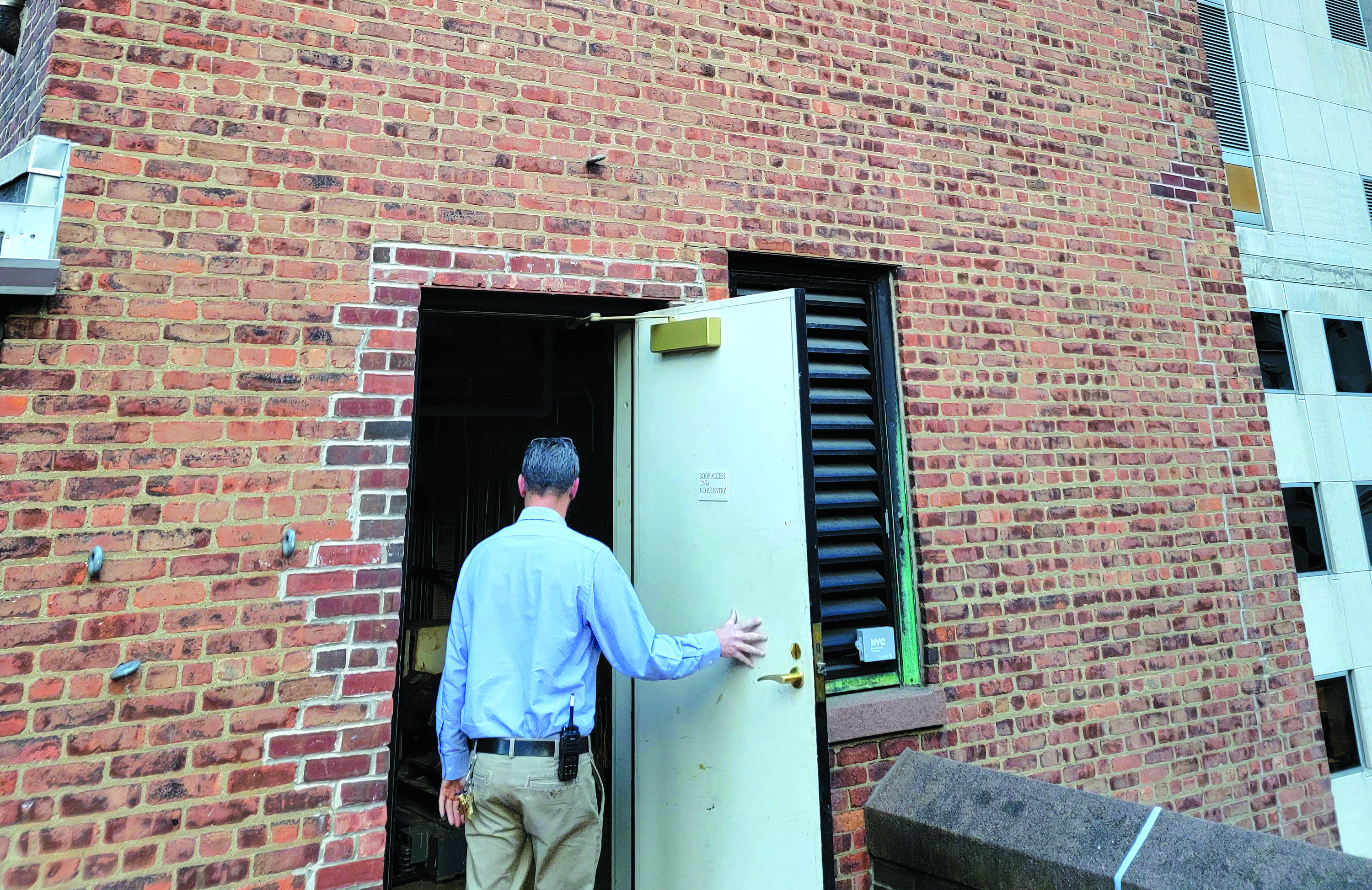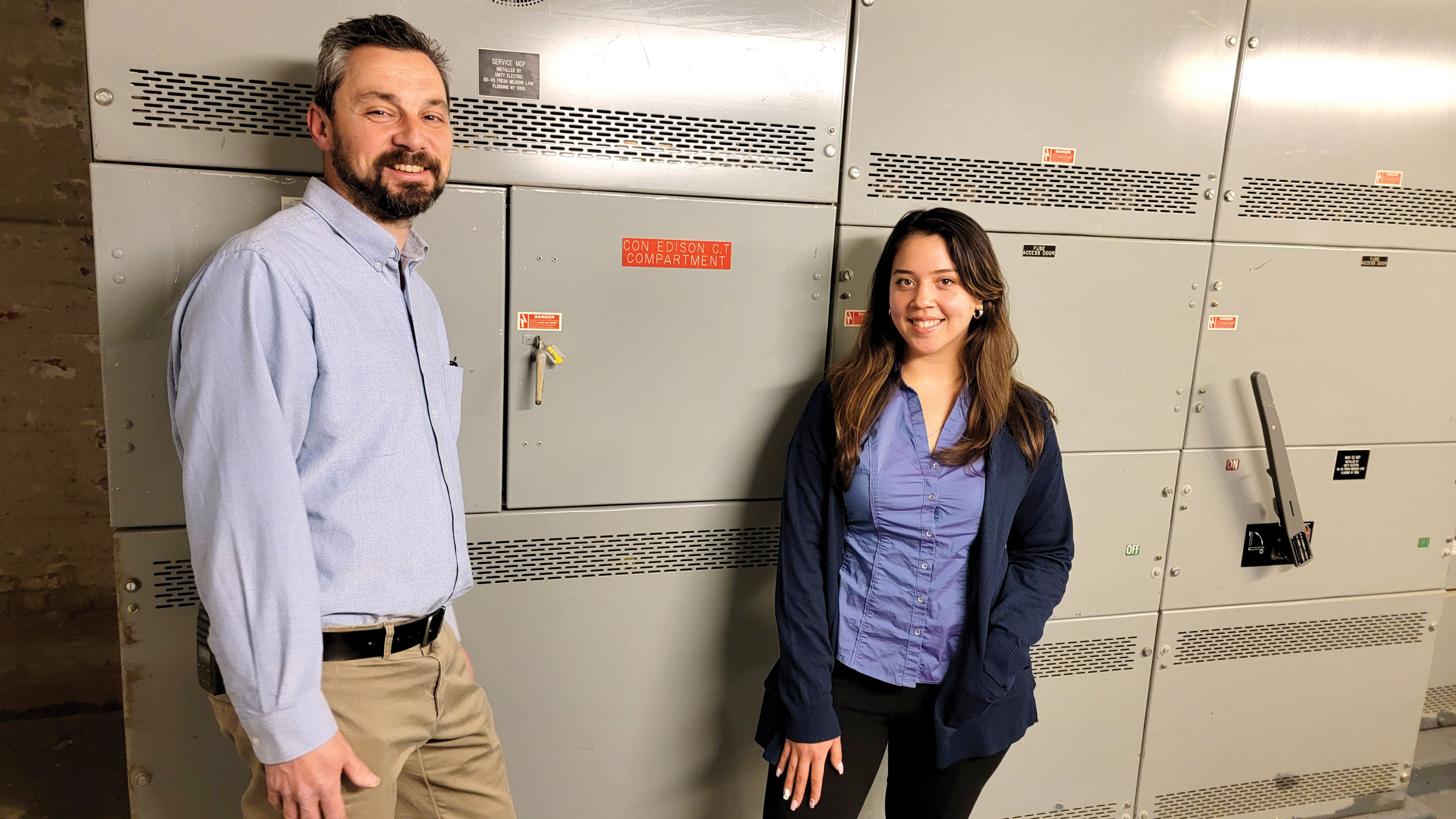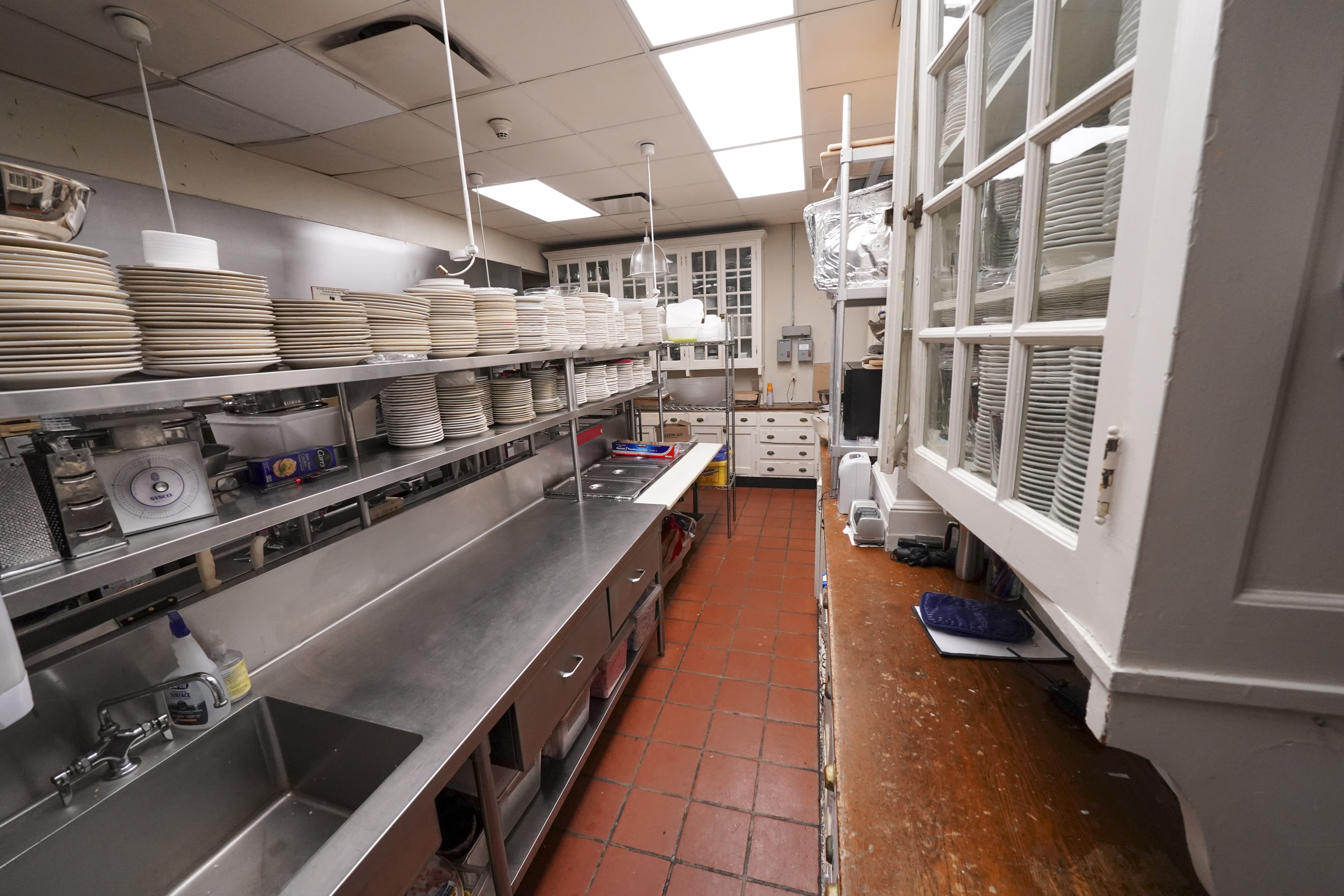General News · April 20, 2023
Greener Church, Greener City
In December the Trustees and Session of Fifth Avenue approved a capital expenditures budget for 2023 that includes $195,000 to replace our cooling tower.

As this work proceeds, the church also will be conducting a comprehensive energy audit (gas, electric and steam) to measure our usage and identify where we can increase efficiency.
These projects are among a range of investments, large and small, that the church is making in a multi-year effort to reduce our carbon footprint.
“Every time we replace a piece of equipment at the church, whether it’s a new dishwasher for the kitchen, a new light bulb in Bonnell Hall, or a new air handler down in the Christian Education Center, we do it with an eye toward improving energy efficiency,” says Senior Pastor Scott Black Johnston. “We are determined to do our part to make Fifth Avenue Presbyterian Church a greener building in a greener city.”
To be sure, many of these efforts come in response to city mandates, such as Local Law 97, which directs buildings of more than 25,000 square feet to reduce greenhouse gas emissions by 40 percent by 2030 and 80 percent by 2050. (According to nyc.gov, buildings account for two-thirds of greenhouse gas emissions citywide.) Facilities director Derek Maddalena and facilities coordinator Sabrina Rodriguez are leading this work on behalf of the church.
Other efforts have come from environmental concerns expressed by church officers, members and staff—including the senior pastor himself, who recently requested that the church move immediately toward eliminating single-use, non-biodegradable plastics in our food service “and in any other areas of our corporate life where they can be eliminated.” We are acting on faith that every step toward environmental conservation makes a difference.
A third impetus is economic. Improved energy efficiency reduces operating costs over time. The church is taking advantage of incentives offered by NYSERDA (the New York State Energy Research and Development Authority). NYSERDA will cover half of the $28,000 cost of the upcoming energy audit, for instance. The church did a similar project with NYSERDA four years ago, when we converted 85 percent of the facility to higher-efficiency LED lighting. Con Edison covered half the cost of the purchase and installation. Compliance, conservation, cost-efficiency. That’s the plan. Here’s how we are executing:
Cooling Tower Project
“We are replacing the existing cooling tower, which is at the end of its useful life,” Derek says. “The outside structure is deteriorating, and hardware that has been exposed to the elements needs to be replaced. The time to do this is now.”
Installed in 2002, the cooling tower is used about eight months of the year as part of the church’s central air conditioning system. The system pumps cooling water through the upper floors to the top of the tower, where a large fan removes hot air from the water. The water is treated with corrosive chemicals that keep the system safe from airborne bacteria (like legionella), but also do a number on the tower’s interior surfaces, which are rusting and beginning to leak. All of the upper panels will be replaced and resealed to prevent leakage.
“We will also be upgrading the motor and motor controller so that we are able to run the fan more efficiently,” Derek says. “Controlling motor speed is a big contributor to energy efficiency and will help us toward our Local Law 97 goals.”

Energy Audit
Officially called the Energy Efficiency Report, the upcoming energy audit is mandated by the city’s Greener, Greater Buildings Plan. It will cover:
- Central air conditioning and heating
- Ventilation and exhaust systems
- Water (booster pumps and piping, heat exchange and distribution)
- Lighting and lighting controls
- Building envelope (roof, walls, windows and doors)
- Elevators
- Building management (schedules, set points and protocols)
The audit will be performed by Goldman Copeland Associates, a New York engineering consultancy that was part of the massive Crossroads project in 2002–03, which created the Christian Education Center, among other improvements.
“This study will give the Property Committee a road map of future capital projects,” Derek says, “with the overall goal of replacing outdated equipment with more energy-efficient models.”
Kitchen Renovation
The full-scale renovation of the kitchen facilities in Bonnell Hall that was announced last spring will be underway in January. The goal is to complete the project by the end of the month—if some necessary city permits arrive in time. But where permitting was not required, we have moved forward.
“A new ceiling, new floor, new freezer, new ice machine and new coffee machine have all been installed,” says Bob Henn, chair of the Property Administration Committee, who is leading the project. “We are choosing energy efficient, environmentally friendly options wherever we can.”
That includes replacing the gas hot water heater with an electric model, replacing the refrigerants in the walk-in freezer, installing a new dishwasher that uses less water, and retrofitting all lighting with LED fixtures.
“We are also being conservative where it makes sense,” he says. “For instance, the triple basin sink in the kitchen is in good order, so we are keeping it, but replacing the faucet and drain.”
The kitchen project is funded by the Kitchen Campaign, which raised more than $520,000 from church members and other supporters last spring. The campaign spoke to the need for major upgrades to sustain our ministries to the homeless and hungry, including Meals on Heels. So how will Meals on Heels continue to serve our homebound neighbors in January?
“We will be moving our Saturday prep and delivery off site,” says Josie Lawrence, co-coordinator of the program. “One of our long-time volunteers has arranged for us to use her employer’s corporate commissary on Park Avenue South. This arrangement will allow us to continue serving a hot meal to approximately 50 recipients during the winter weeks of the reno.”

Chapel Restoration
In 2025, Kirkland Chapel (and the rest of the Curry Church House) marks its 100th year. An eight-member task force has been meeting since May to consider how best to preserve this sacred space and prepare it for another century of service.
These are still early days. The task force has met with a design consultant and begun conversations with a restoration architect. The plan is to present recommendations and cost estimate to the Trustees and the Session in May. Work will not begin before 2024.
There will be an exciting story to tell later this year. For now, let’s talk infrastructure.
“Lighting is the number one thing,” Derek says. “We will probably open up the ceiling to repair or replace the current fixtures, and upgrade the ceiling insulation at the same time. This will be the biggest improvement to the lighting in the Chapel since 1963.”
In addition to the lighting, much of the piping, wiring and duct work in the ceiling and below the floor are nearly 100 years old and in need of repair—all with an eye toward our energy efficiency goals. Because the chapel floor extends into the lobby, the task force also is planning improvements to the restrooms, the security area, and the entrance leading to the elevators and gallery.
The Chapel accounts for a sizable portion of the building envelope—the walls, doors and windows that face the outside. Unlike the Sanctuary, which is nestled inside double walls and double glass, the Chapel meets seasonal heat
and cold head-on.
“We need to figure out how to insulate single-pane stained glass,” Derek says.
“In all of these projects,” the senior pastor says, “we seek to preserve the architectural beauty of this church, while making things both greener and safer. I am grateful to our facilities staff and committee members. They are handling this long list of important projects with intelligence and grace.”